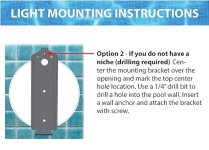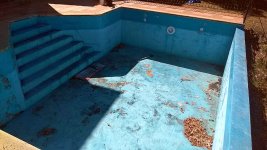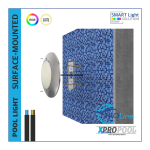Hello from rainy France...
Think I may have made a mistake with my pool lights bought!
I'm refurbishing our pool, its concrete with a fiberglass skin, anyways how do I seal the cable?
Is there a fitting I can get that will seal around the cable or one I can pass the cable through?
As we are only in the planning stage all ideas welcome
Regards
Chris
Think I may have made a mistake with my pool lights bought!
I'm refurbishing our pool, its concrete with a fiberglass skin, anyways how do I seal the cable?
Is there a fitting I can get that will seal around the cable or one I can pass the cable through?
As we are only in the planning stage all ideas welcome
Regards
Chris





 So it sounds like you are concerned about ensuring the new hole(s) you drill for the light cable will be sealed to prevent water from leaking out correct? Good question as most of the time I'm used to seeing a small size conduit inserted through the wall to carry the cable that eventually goes back to the equipment pad (power source) that is mounted about 2-3 ft above the waterline. That way water getting into the conduit isn't a problem. But if you are hoping to simply slip the cable through the wall by itself, I would suspect either a good quality polyurethane sealant or perhaps some sort of pool butyl plug may be in order.
So it sounds like you are concerned about ensuring the new hole(s) you drill for the light cable will be sealed to prevent water from leaking out correct? Good question as most of the time I'm used to seeing a small size conduit inserted through the wall to carry the cable that eventually goes back to the equipment pad (power source) that is mounted about 2-3 ft above the waterline. That way water getting into the conduit isn't a problem. But if you are hoping to simply slip the cable through the wall by itself, I would suspect either a good quality polyurethane sealant or perhaps some sort of pool butyl plug may be in order.